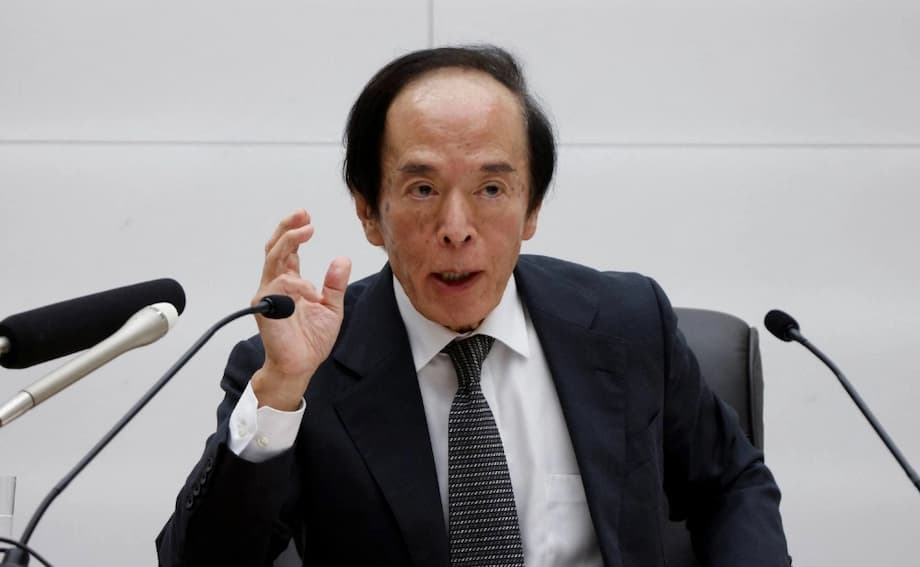Markets react as BOJ moves to sell ETFs and J REITs
The Bank of Japan voted to begin selling portions of its exchange traded fund portfolio and its holdings of Japan real estate investment trusts. The plan calls for sales of roughly 330 to 335 billion yen per year of ETFs and about 5 billion yen per year of J REITs. Japanese stocks reversed early gains on the news, and the yen firmed as investors recalibrated expectations for monetary policy and liquidity in the stock market.
- Markets react as BOJ moves to sell ETFs and J REITs
- What exactly is the BOJ selling
- Why stocks fell and the yen firmed
- How the sale will work without disorder
- Rates on hold today, but debate is heating up
- Why the BOJ is unwinding now
- What the sale could mean for markets
- How the mechanics might work
- What to watch from here
- At a Glance
The step advances a long awaited shift away from the extraordinary measures built up over the past decade. Over years of stimulus, the central bank purchased large amounts of stocks via ETFs to push risk taking and fight deflation. Those assets do not mature, so they remain on the balance sheet until sold. Trimming them is intended to reduce risk on the central bank balance sheet and return more of the equity market to private investors.
The decision came alongside a hold on short term interest rates at 0.5 percent. Two policy board members, Hajime Takata and Naoki Tamura, argued for a 0.75 percent rate, a signal that debate over the pace of normalization is intensifying. Core consumer prices rose 2.7 percent in the year to August, easing for a third straight month yet still above the 2 percent target, which keeps the path of future rate increases in focus.
What exactly is the BOJ selling
ETFs bundle baskets of stocks into a single security that trades like a share. The BOJ accumulated these funds for more than a decade to support risk appetite and drive up asset prices. At cost, the ETF book is about 37 trillion yen. Estimates of market value are much higher, near 80 trillion yen as of late summer. Unlike government bonds, ETFs do not expire, so the only way to remove them from the balance sheet is to sell. J REITs, which are listed trusts that own real estate, were also purchased as part of crisis era stimulus to compress risk premiums in property markets.
Why stocks fell and the yen firmed
Equities pulled back because the prospect of steady official selling adds supply to the market. The Nikkei 225 fell more than 1 percent after the announcement, giving up a record high set at the open. Strategists expect heavier pressure on segments where the BOJ is a large holder, including some blue chip and technology names. The program also signals a shift toward tighter financial conditions, which usually weighs on growth sensitive stocks.
The yen strengthened on the policy tilt toward normalization. Dollar yen slipped toward 147.20 in early trading, then recovered part of the move as markets settled. A slower drawdown of domestic liquidity and the hint of faster rate hikes both support the currency compared with earlier years when negative rates and yield caps made the yen a popular funding unit.
Bond markets also reacted. Short dated yields rose as traders priced a higher chance of rate increases over coming meetings. Longer dated yields moved modestly, reflecting a balance between a firmer policy stance and caution over the growth outlook at home and abroad.
How the sale will work without disorder
Officials have signaled a gradual and predictable process. The BOJ intends to start sales once operational preparations are complete, and it can adjust the annual pace at policy meetings. A roughly 330 to 335 billion yen yearly flow is small relative to the total book, which extends the program over many years and reduces the risk of sudden market dislocation.
Lessons from past asset disposals
The central bank plans to draw on its experience reducing a portfolio of equities acquired from banks in an earlier era. That program unfolded slowly over about twenty years to limit price swings. The approach favored smaller, steady transactions rather than large blocks. Applying a similar template to ETFs points to incremental sales that absorb naturally into daily market turnover.
Officials have also stressed they will sell at appropriate prices to avoid crystallizing losses or destabilizing markets. That implies flexibility in timing and methods, such as spacing sales around periods of strong demand or using rules that dampen the effect on benchmark indices. The inclusion of J REITs at a much smaller pace, roughly 5 billion yen a year, reflects the thinner liquidity in property funds compared with equities.
Rates on hold today, but debate is heating up
While policy rates stayed unchanged at 0.5 percent, the split vote points to a live debate over the timing of the next hike. Two board members favored 0.75 percent, citing a view that price stability goals are within reach and inflation risks are building. Others preferred to assess more data on how domestic demand and global trade will evolve through year end.
Several factors will likely shape the path. Inflation has moderated from last year but remains above target. Wage settlements have improved compared with the pre pandemic era, which can support household income and services prices. At the same time, softer external demand and the drag from new trade barriers threaten manufacturers and exporters. The bank has kept the door open to a move if its forecast for growth and prices stays on track, while acknowledging uncertainty around the global cycle.
The contrast with other major central banks adds to the cross currents. The Federal Reserve cut rates recently to buffer a slowing United States economy. The Bank of England kept policy steady. In that context, Tokyo stands out as the only major capital where the debate is about how far to raise rates and how quickly to unwind crisis era asset holdings.
Why the BOJ is unwinding now
Japan has moved away from the deflation mindset that shaped policy for much of the past two decades. The bank ended negative rates and yield curve control last year and raised short term rates to 0.5 percent in January. With underlying inflation firmer than in the 2010s and wages rising, the central bank is building a more conventional policy framework. Part of that shift is trimming a balance sheet that has grown to around 125 percent of the economy, the largest among major central banks.
Reducing ETFs and J REITs also limits exposure to equity market swings. These are risk assets that can move sharply with global sentiment and earnings trends. Bringing their weight down over time lowers volatility in the central bank financial statements and reduces the chance that monetary policy is constrained by equity price moves. Selling gradually while growth is positive and inflation is near target can spread the adjustment over a favorable backdrop.
Politics remain a complicating factor. A leadership race in Tokyo following the resignation of the prime minister has raised uncertainty about fiscal and regulatory priorities. Debate has emerged over whether gains from ETF sales should support social spending. The bank has emphasized the need to avoid market disruption and preserve policy independence. That points to a technical program focused on market function rather than fiscal aims.
What the sale could mean for markets
For equities, a steady supply of shares from ETF redemptions can be a headwind for some index heavyweights, especially where the central bank holds a large footprint. Companies with strong earnings momentum or clean balance sheets can still attract buyers, but valuations may face a higher bar. The pressure is likely to be uneven across sectors. Financials could gain if higher rates support margins, while export heavy firms tend to prefer a weaker yen.
For the currency, the signal of a firmer policy stance supports the yen on the margin. The impact will depend on how interest rate differentials with the United States and Europe shift over coming quarters. If the BOJ takes another step higher on rates while the Fed is easing, the yen may find a stronger floor than in recent years. That would affect exporters and import costs across the economy.
For bonds, the key variable is the rate path rather than ETF sales. Balance sheet reduction in equities does not directly shrink the stock of government bonds. Still, a faster pace of normalization can pull yields higher, especially at the short end. Investors will also watch whether improved market function in equities spills into a broader shift in domestic risk appetite and savings behavior.
How the mechanics might work
ETF selling can occur through small daily offers that blend into normal trading volumes. Proceeds are used to reduce the central bank balance sheet, without direct spillover to fiscal accounts. Because ETFs represent baskets, redemptions can lead to the sale of underlying index constituents in proportion to their weights. That is one reason strategists expect the effect to cluster in large liquid names.
The bank retains options if conditions turn disorderly. It can pause sales in periods of stress, adjust the pace at scheduled meetings, or target less sensitive windows. The stated goal is to avoid disrupting price discovery. The much smaller J REIT sale pace reflects the need to be careful in a market with lower turnover and wider spreads than blue chip equities.
What to watch from here
Investors will focus on the start date for operations, the monthly schedule, and any guidance on how the central bank will handle market holidays or thin trading periods. The review clause that allows changes to the pace gives policymakers room to respond to data. Markets will also track the mix of sectors affected by ETF redemptions, flows into private investment vehicles, and any changes in household allocations as cash and deposit rates rise.
Currency traders will keep an eye on the gap between Japanese and United States yields, incoming inflation prints, and wage data. Equity desks will watch bid ask depth in index heavy names around anticipated sale windows. Bond traders will parse communications for hints on timing of the next rate hike, given the split vote at this meeting. Across assets, the theme is a careful step toward a more normal policy stance.
At a Glance
- The BOJ will begin selling ETFs at around 330 to 335 billion yen per year and J REITs at about 5 billion yen per year after preparations are complete
- Japanese stocks fell more than 1 percent and the yen strengthened after the announcement
- Policy rates stayed at 0.5 percent, while two board members favored a rise to 0.75 percent
- The central bank aims to shrink a balance sheet near 125 percent of GDP without unsettling markets
- ETF holdings stand near 37 trillion yen at cost, with a much higher market value after years of gains
- Sales will be gradual and adjustable, with a focus on orderly market function
- Analysts expect pressure on index heavy equities, support for banks from higher rates, and a firmer yen if normalization continues
- Global context includes a recent Federal Reserve rate cut and steady policy in the United Kingdom, which highlights Tokyo as an outlier still moving toward tighter settings




